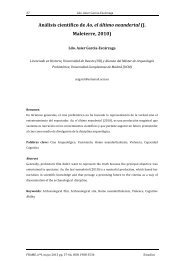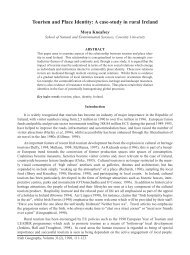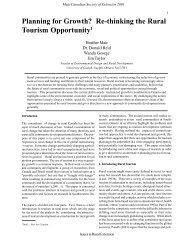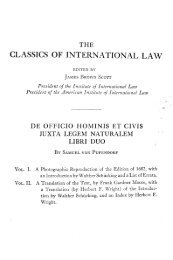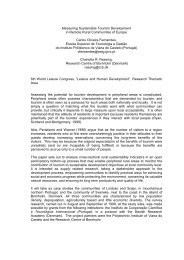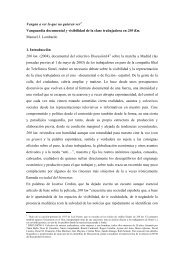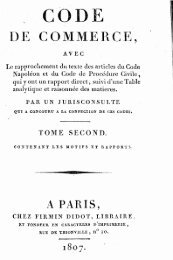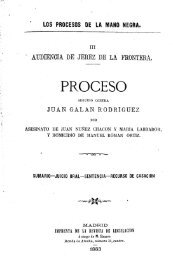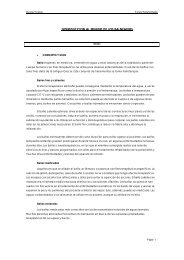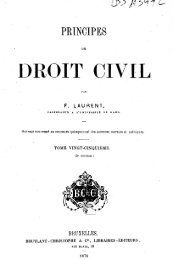Alicante Step by step - Universidad de Sevilla
Alicante Step by step - Universidad de Sevilla
Alicante Step by step - Universidad de Sevilla
Create successful ePaper yourself
Turn your PDF publications into a flip-book with our unique Google optimized e-Paper software.
PARKS, PROMENADES AND PLAZAS<br />
<strong>Alicante</strong>, with its arms open to the Mediterranean, has a number of areas inten<strong>de</strong>d for recreation<br />
and enjoyment where visitors command won<strong>de</strong>rful panoramas of the sea.<br />
Canalejas Park is the ol<strong>de</strong>st park in the city. It was <strong>de</strong>signed in 1886 <strong>by</strong> the architect<br />
González Altés. The entranceway is guar<strong>de</strong>d <strong>by</strong> stone sculptures of lions and dogs, and<br />
insi<strong>de</strong> is a spectacular hundred-year-old ficus of enormous proportions, a small monument<br />
<strong>by</strong> Daniel Bañuls as an allegory to the <strong>Alicante</strong> writer Carlos Arniches, a map of Spain<br />
carved in wood and various fountains.<br />
On the southern outskirts of the city, next to the sea, there is a palm tree plantation<br />
which has been used as a natural film location. Today it is one of the most <strong>de</strong>lightful<br />
green zones of <strong>Alicante</strong>, called the El Palmeral park. It has waterfalls, ponds, flowerbeds<br />
showing a range of local flower and plant varieties, a children’s playground, a cross-<br />
country biking circuit, an auditorium, promena<strong>de</strong>s, a café, etc.<br />
On the eastern slope of San Fernando Castle is the so-called Monte Tossal Theme Park,<br />
a large leisure area covering 63,000m 2 distributed over the terraced slopes of the<br />
mountain, and named after local districts of the Land of Valencia. It has installations<br />
for minigolf, bowls, skating, giant chess, a biking track, a rock climbing practice wall,<br />
etc., all set on a spectacular lookout point over the sea and the city.<br />
On the northwestern fringe of the city, far from the centre, is the largest green zone for<br />
leisure and recreation in <strong>Alicante</strong>, called Parque <strong>de</strong> Lo Morant, with promena<strong>de</strong>s,<br />
playgrounds, an open-air auditorium, etc.<br />
The city’s green lung, however, is undoubtedly the hill called Monte Benacantil, carpeted<br />
in pine trees in a large proportion although populated with eucalyptuses as well. The<br />
area is located next to the new Jaime II Avenue and Vázquez <strong>de</strong> Mella Street. Using the<br />
access road to Santa Bárbara Castle, visitors can stop at various lookout points for fine<br />
views of the town through the pine trees.<br />
On one of the slopes running down to the old quarter of town towards the southwest, an<br />
innovative area to be called Parque <strong>de</strong> La Ereta is soon to be completed. Designed <strong>by</strong> the<br />
French architects Marc Bigarnet and Frédéric Bonnet, winners of the European architecture<br />
competition EUROPAN, this park will be a natural kind of recreation area to be kept as<br />
rough and wild as possible, with terraced slopes, and populated with native plant species<br />
in keeping with the colours of the local terrain. There will be plants, shrubs and trees,<br />
stone pathways flanked <strong>by</strong> shady trees, fountains with drinking water, a kiosk with a<br />
pergola, a café on the flat central area of the park (a former threshing ground), which<br />
will be used for open-air shows, and a multifunctional classroom, with all buildings fitting<br />
in appropriately with the natural surroundings.<br />
The most popular of <strong>Alicante</strong> promena<strong>de</strong>s is without doubt La Explanada <strong>de</strong> España. Built<br />
over the ancient port quay, this promena<strong>de</strong> was conceived in 1867 <strong>by</strong> the municipal<br />
architect José Guardiola Picó.<br />
The current three-colour pavoirs dating from 1958<br />
show the varieties of marble found in the area:<br />
<strong>Alicante</strong> red, Ivory cream and Marquina black. There<br />
are 6.6 million 4x4cm tiles tessellated together to<br />
form a gigantic mosaic measuring over half a<br />
kilometre in length, flanked <strong>by</strong> four rows of palm<br />
trees forming one central and two si<strong>de</strong> walkways,<br />
ending in a monumental fountain (1960) <strong>by</strong> Carlos<br />
Buigas, who also <strong>de</strong>signed the Montjuich fountains<br />
in Barcelona. And a monument to the assassinated<br />
turn-of-the-century liberal party lea<strong>de</strong>r Canalejas<br />
(1914) <strong>by</strong> the <strong>Alicante</strong> sculptor Vicente Bañuls.<br />
18 19



